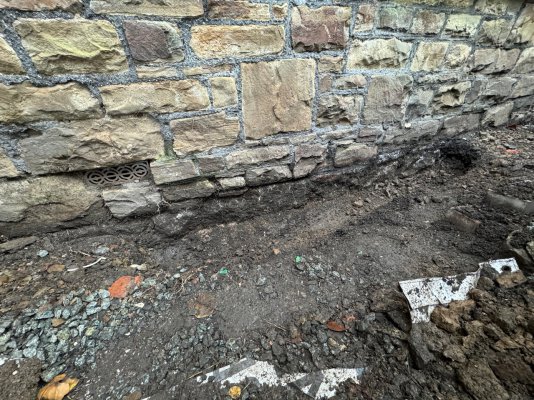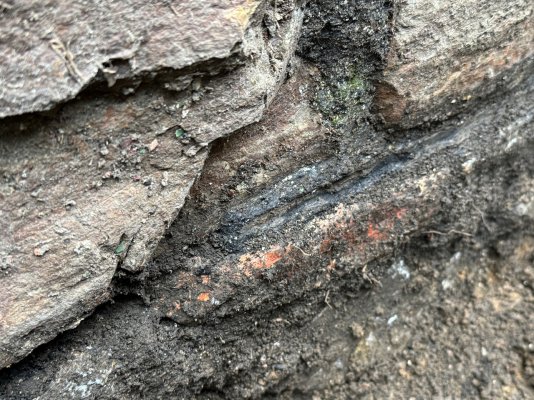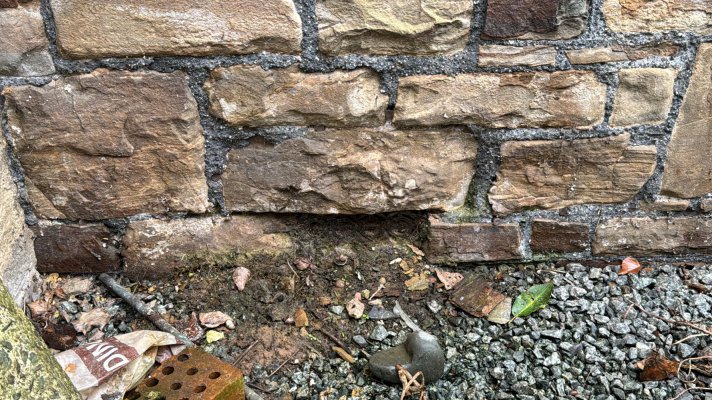DaveG
Member
- Messages
- 133
- Location
- Pembrokeshire
I’m in the process of digging out a concrete floor in one room to tackle wet walls and am also taking ground level down on the outside of the room.
When digging out the floor it’s been noticeable to find a thin slate course on both interior walls (where there is an adjacent room). On the outside wall however it either doesn’t exist or is more well hidden.
The interior walls are single skin brick but the outside wall is stone and as such you don’t get neat uniform rows of stone like you do with the brick.
Could it be that the slate is at differing heights according to the variable mortar lines in the stone or could it be that the exterior walls simply don’t have them?
Here’s a picture of the outside wall in a spot where I thought there could be some slate but it’s very thick and it’s the only stone it’s noticeable on.
Granted it is pretty muddy still at the moment but wondered if there is a known common practice in these scenarios?


When digging out the floor it’s been noticeable to find a thin slate course on both interior walls (where there is an adjacent room). On the outside wall however it either doesn’t exist or is more well hidden.
The interior walls are single skin brick but the outside wall is stone and as such you don’t get neat uniform rows of stone like you do with the brick.
Could it be that the slate is at differing heights according to the variable mortar lines in the stone or could it be that the exterior walls simply don’t have them?
Here’s a picture of the outside wall in a spot where I thought there could be some slate but it’s very thick and it’s the only stone it’s noticeable on.
Granted it is pretty muddy still at the moment but wondered if there is a known common practice in these scenarios?



